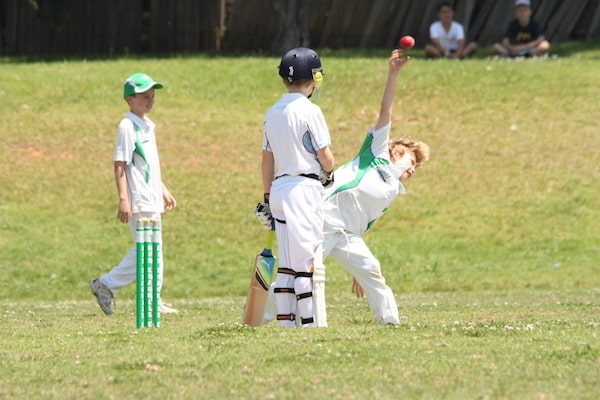Cricket Injury Prevention
Published: 05 Oct 2016

We love our cricket. But even though cricket is considered a non-contact sport, injuries can still occur in lots of ways. Fractures and contusions can result from a direct blow from a cricket ball or when diving for the ball in the field. Overuse injuries as well as sprains and strains are common and associated with all aspects of the game due to the repetitive running, throwing, batting and bowling. Factors which contribute to overuse injuries include poor technique, training errors, sudden intensity/duration/frequency changes to training, muscle or tendon imbalances (muscle strength and flexibility), biomechanical malalignment (e.g. rotation of hips, flat feet, knock kneed), inappropriate footwear, recent growth spurts, and other health conditions (such as arthritis). A poor warm-up, cool down or rehabilitation can also lead to overuse injuries.
Tips for Preventing Injury
Be prepared:
- Pre-season conditioning
- Attend training so your body is conditioned for cricket
- Always warm up and stretch before you play or train
- Cool down and stretch after you play or train
- Stay hydrated – drink plenty of water before, during and after
(For our post on water v sports drinks go here, on safe summer sports, read here)
Wear the right gear:
- Shoes specific for cricket
- Wear correct batting equipment – helmet, gloves, leg pads, boxes and forearm guards
- A mouthguard can also be useful, preferably custom-fitted
- Use a helmet with a faceguard when wicket keeping, batting or fielding in close positions
- Wear your protective gear at all times, even while at training
- If you have had previous injuries, talk to your physiotherapist about appropriate bracing or protective gear that would be suitable
Keep the playing environment safe:
- Check for and remove any potential hazards from the playing surface, particularly the pitch (e.g. stones, tree branches, water)
- Make sure the cricket nets for practice are satisfactory
- Being aware of the environmental conditions (cricket is often played in hot conditions over many hours, leaving players at risk of dehydration, heat stress and sun damage)
- Wear a hat and use sunscreen
Practice good techniques:
- Good coaching to develop the right skills and techniques for all aspects of the game, including bowling, batting, fielding and catching
- Focus on good technique during training in order to assist with the transfer of skills to a game situation
- Know how to use and fit your equipment correctly and safely
- Modified rules for younger participants
Managing Injuries
- Prompt first aid if an injury does occur no matter how small it may seem
- Immediately after an injury, use STOP
- Stop participating
- Talk to first aid officer
- Observe – have first aid officer observe the injury site and symptoms
- Prevent further injury by getting help
- Then use RICER for sprains, strains, fractures and bruises – rest, ice, compression, elevation and referral (see GP or physio)
- The first 48 hours are vital and can reduce the time spent on the sidelines
- Obtaining an accurate diagnosis will assist with rehabilitation and also decrease the amount of time spent being unable to play
- Appropriate rehabilitation post injuries before returning to play
- Returning to play too early after an injury can lead to possible further injury or other associated injuries as the original injury (or tissue involved) has not completely healed
- Physiotherapy is essential for providing treatment techniques, education about your injury and the appropriate exercises to promote healing
- It is important also to work with your physio to prevent further injuries – braces and taping may be required
- A rehabilitation program is not able to be completed until you are pain free, bones have healed (if fractured), full movement of nearby joints is achieved, and when you have regained pre-injury muscle strength
Cricket injuries can either be acute which are those that occur suddenly (sprain, strain or fracture) or chronic where they occur gradually through overuse and repetitive stress (tendinopathies, stress fractures). Cricket injuries can result in a number of ways due to the functional demands of the sport and the early management of these injuries is essential.
If you have any concerns about an injury, a possible injury, or preventing injuries from occurring, please speak to your physiotherapist.

Christie Gardner is a Physiotherapist at The Healthy Body Company in Penrith.

